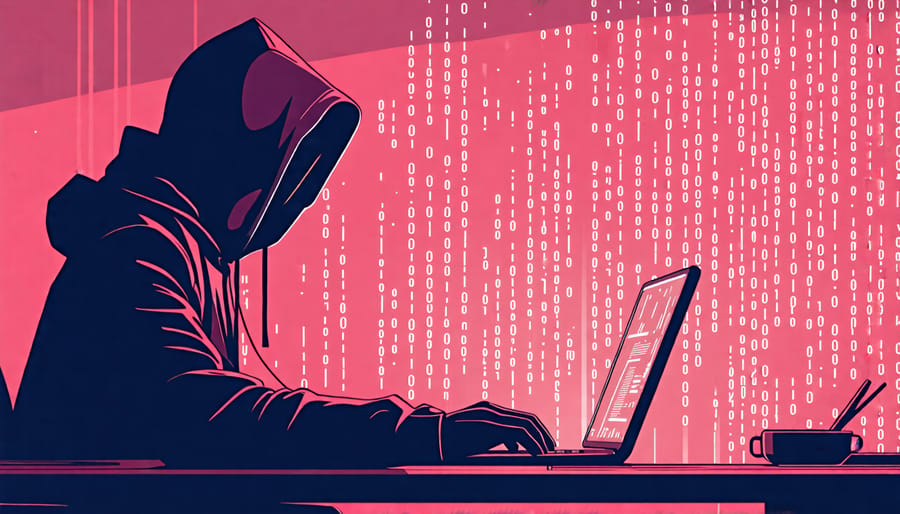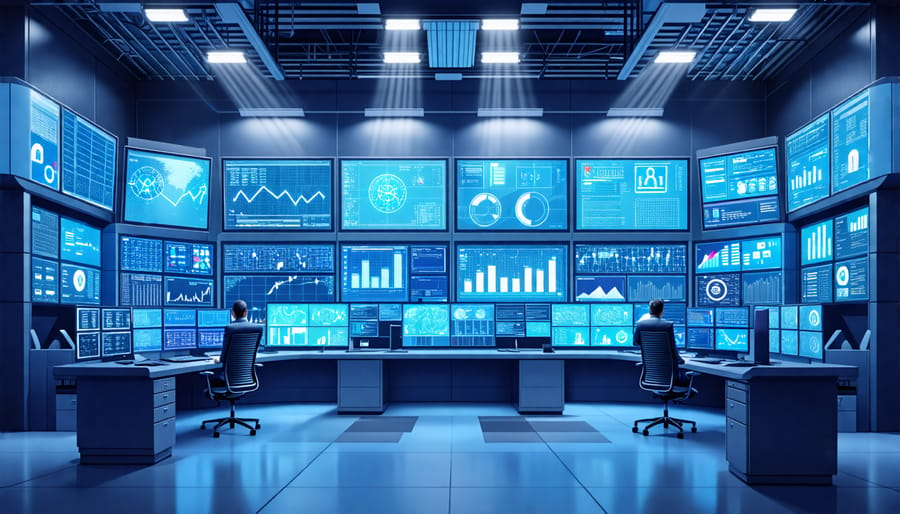Guard what matters most. The utilities we rely on every day – power, water, communications – form the backbone of modern society. Yet this critical infrastructure faces mounting threats, from extreme weather fueled by climate change to cyber attacks launched by hostile actors. Hardening and securing these vital systems has never been more important. Utility companies and the construction firms that build this infrastructure must remain vigilant and proactive. Leveraging advanced technologies like solar power generation and smart grid systems can boost resilience. Robust cybersecurity is essential to block hackers targeting operational technology. And strong partnerships between the public and private sectors will be key to coordinating protection of these lifeline services we all depend on. The stakes could not be higher. One major utility outage can grind business to a halt, disrupt emergency services, and put lives at risk. Investing now in a resilient, secure critical infrastructure is crucial – because the cost of failure is far too great. It’s time to make protecting our most vital systems a top priority.
Threats to Critical Infrastructure

Cyberattacks
Critical infrastructure utilities face significant risks from cyberattacks that target their control systems. Hackers exploit vulnerabilities to gain unauthorized access, potentially disrupting operations or stealing sensitive data. Malware can infect systems, causing malfunctions or allowing attackers to seize control. Ransomware is a growing threat, encrypting data and demanding payment for release. In 2021, a ransomware attack on Colonial Pipeline disrupted fuel supplies across the southeastern U.S., highlighting the real-world impact of these hacking threats. Utilities must prioritize cybersecurity to protect against malicious code injection, network intrusions, and social engineering tactics like phishing. Robust measures include network segmentation, multi-factor authentication, regular patching, and employee training. Incident response plans are crucial for minimizing damage and ensuring continuity of essential services. As cyber threats evolve, ongoing vigilance and investment in defensive capabilities will be critical for safeguarding these vital systems that underpin modern society.
Physical Sabotage
Physical sabotage poses a significant threat to critical infrastructure utilities. Vandalism, such as graffiti or damage to equipment, can disrupt operations and require costly repairs. Theft of materials like copper wiring from substations or construction sites can lead to service interruptions and project delays. Most concerningly, targeted terrorist attacks on power plants, water treatment facilities, or transmission networks could have devastating consequences. According to a report by the Center for Strategic and International Studies, physical attacks on the U.S. power grid occur every four days on average. Robust physical security measures, including perimeter fencing, surveillance systems, and access control, are essential for protecting these vital assets. Collaboration between utility providers, law enforcement, and national security agencies is crucial to prevent and respond effectively to physical sabotage attempts targeting our critical infrastructure.
Natural Disasters
Natural disasters pose significant threats to critical infrastructure utilities. Storms can down power lines, damage substations, and cause widespread outages. Flooding can inundate water treatment plants, compromise water quality, and overwhelm sewer systems. Earthquakes can rupture pipelines, damage reservoirs, and disrupt telecommunication networks. These events not only cause immediate damage but also lead to cascading failures across interdependent systems. To mitigate the impacts of natural disasters, utilities must invest in resilient design, regular maintenance, and emergency preparedness. Strategies include reinforcing structures, elevating critical equipment, installing backup power systems, and developing robust emergency response plans. Collaboration among utilities, government agencies, and the construction industry is crucial for building resilient infrastructure that can withstand the forces of nature and ensure continuity of essential services during and after disasters.
Strategies for Securing Utilities
Cybersecurity Measures
Protecting critical infrastructure utilities requires a comprehensive approach to cybersecurity. At the foundation are firewalls, which act as a barrier between internal networks and external threats. Next-generation firewalls offer advanced features like deep packet inspection and intrusion prevention. Encryption is another crucial measure, scrambling sensitive data to make it unreadable if intercepted. This includes encrypting data both in transit and at rest. Stringent access controls ensure only authorized personnel can interact with vital systems and data. Role-based access, multi-factor authentication, and regular access reviews harden defenses. Continuous monitoring via security information and event management (SIEM) systems allows real-time threat detection and response. Monitoring encompasses network traffic, user behavior, and system logs. Employee training on security best practices, combined with robust incident response plans, bolsters the human element of cybersecurity. Regularly updating systems, promptly patching vulnerabilities, and engaging in threat intelligence sharing with government and industry partners are also key. Adopting a zero-trust security model and deploying technologies like network segmentation and endpoint detection and response (EDR) further enhances a utility’s cyber resilience in the face of evolving threats.

Physical Security
Ensuring the physical security of critical infrastructure utilities is paramount. A multi-layered approach, incorporating barriers, surveillance systems, alarms, and trained security personnel, helps safeguard these vital facilities against intrusion and damage. Perimeter fencing, bollards, and reinforced walls serve as the first line of defense, deterring unauthorized access. Strategically placed cameras and sensors monitor the premises 24/7, enabling rapid detection of potential threats. Advanced alarm systems alert security teams to breaches, facilitating swift response. Well-trained guards, both on-site and remotely, provide an additional level of protection, conducting patrols, managing access control, and coordinating with law enforcement when necessary. Implementing robust physical security measures not only protects the infrastructure itself but also ensures the continuous delivery of essential services to communities. By investing in comprehensive security solutions, utility providers can mitigate risks, maintain operational resilience, and instill confidence in their ability to withstand and recover from physical security incidents.
Resiliency Planning
Resiliency planning is crucial for critical infrastructure utilities to ensure continuity of services during disruptions. Backup systems, such as redundant power supplies, alternate water sources, and secondary communication networks, help maintain operations when primary systems fail. Redundancies in equipment, personnel, and processes build layers of protection against outages. Comprehensive disaster recovery plans outline step-by-step procedures for restoring services quickly and safely after incidents. These plans should be regularly updated and tested through simulated scenarios. Utilities must also have robust data backup and recovery strategies to protect critical information systems. By investing in resiliency measures, utilities can minimize downtime, reduce financial losses, and maintain public trust. Collaboration with emergency management agencies and other stakeholders is key to developing effective resiliency plans that address a range of potential threats. Ultimately, a proactive approach to resiliency planning helps utilities deliver reliable services even in the face of adversity, ensuring the well-being of the communities they serve.
Industry Standards and Regulations
The North American Electric Reliability Corporation (NERC) establishes and enforces reliability standards for the bulk power system in North America. These standards cover critical areas such as transmission operations, critical infrastructure protection, personnel performance, emergency preparedness, and more. NERC’s goal is to ensure a reliable, resilient, and secure bulk electric system. One key standard is the Critical Infrastructure Protection (CIP) series, which addresses the cybersecurity of critical assets and systems. CIP standards require utilities to identify and protect critical cyber assets, implement access controls, monitor system security, and have incident response plans in place. Compliance with NERC standards is mandatory for bulk power system owners, operators, and users, and is enforced through audits and potential penalties for violations. By adhering to NERC reliability standards, utilities can enhance the resilience and security of the bulk power system against threats such as cyber attacks, physical security breaches, and operational failures. This helps ensure a stable and reliable supply of electricity to support other critical infrastructure sectors and the economy as a whole. The Environmental Protection Agency (EPA) has established comprehensive regulations for water and wastewater systems to ensure the safety and reliability of these critical utilities. The Safe Drinking Water Act (SDWA) and the Clean Water Act (CWA) are the primary federal laws that govern the treatment and distribution of drinking water and the collection, treatment, and disposal of wastewater. Under these regulations, water and wastewater utilities must adhere to strict standards for contaminant levels, treatment processes, and monitoring and reporting requirements. The EPA works closely with state and local authorities to enforce these regulations and conduct regular inspections of water and wastewater facilities. Compliance with EPA regulations is essential for protecting public health, preserving the environment, and maintaining the integrity of these vital infrastructure systems. As the demand for clean water and effective wastewater management continues to grow, the EPA’s role in regulating these utilities remains crucial for the well-being of communities across the nation.
The Future of Utility Security
The future of utility security is being shaped by emerging trends and innovations aimed at enhancing the protection of critical infrastructure. One promising development is the increasing adoption of artificial intelligence (AI) and machine learning (ML) technologies. AI and ML algorithms can analyze vast amounts of data from sensors, cameras, and other sources to detect anomalies, predict potential threats, and enable proactive security measures. For example, AI-powered systems can identify unusual patterns in network traffic or physical access attempts, alerting security personnel to potential intrusions before they cause damage. Another trend is the integration of blockchain technology into utility security frameworks. Blockchain’s decentralized and immutable nature makes it well-suited for securing critical data and transactions within utility networks. By leveraging blockchain, utilities can establish secure, tamper-proof records of system access, control commands, and data exchanges. This enhances transparency, accountability, and resilience against cyber attacks. The rise of the Internet of Things (IoT) is also transforming utility security. Smart sensors, connected devices, and advanced metering infrastructure (AMI) enable real-time monitoring and control of utility assets. However, the increased connectivity also expands the attack surface. To address this, utilities are adopting edge computing solutions that process data closer to the source, reducing the exposure of sensitive information to external networks. Additionally, secure communication protocols and encryption technologies are being employed to protect data transmitted between IoT devices and control centers. Collaborative efforts among utilities, government agencies, and cybersecurity experts are fostering innovation in critical infrastructure protection. Information sharing initiatives, such as the Electricity Information Sharing and Analysis Center (E-ISAC), facilitate the exchange of threat intelligence and best practices among stakeholders. These collaborations help utilities stay informed about emerging threats and develop coordinated defense strategies. As the threat landscape evolves, the future of utility security will require ongoing innovation, vigilance, and adaptability. By embracing cutting-edge technologies, strengthening cybersecurity measures, and fostering collaboration, utilities can fortify their critical infrastructure against ever-changing threats, ensuring the reliable and secure delivery of essential services to communities.

